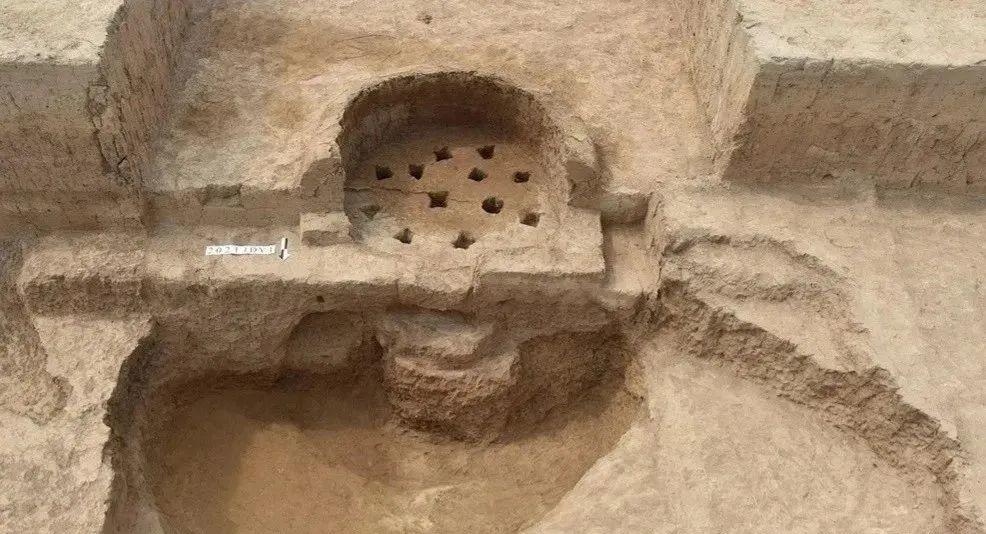On March 23, the Shanxi Archaeological Research Institute released the latest archaeological results. In 2020, in order to cooperate with the construction of the Jishan County Stadium Project, new cultural relics from the Summer Period were discovered during exploration within the scope of the land. Located in the north of Dongqu Village, Jifeng Town, Jishan County, it is a newly discovered site, so it was named dongqu ruins. In 2021, the Shanxi Provincial Archaeological Research Institute and the Yuncheng City Cultural Relics Protection Center jointly carried out archaeological excavations at the site, with an excavation area of about 1,000 square meters, and a total of 1 house site, 2 pottery kilns and 36 ash pits were cleaned up.

The two newly discovered pottery kilns at the Dongqu site are of the same size and shape, and they are all small vertical kilns with simple structure, which are composed of kiln chambers, kiln beds, and fire pits from top to bottom, and there are operating rooms around them. This is the same as the pottery kilns found at the Dongxia Feng site, both in size and shape.
The 36 ash pits are the most found relics in the East Canal site, and some of the larger ash pits are the most representative of the characteristics of the East Canal site. Among them, the ash pit numbered H10 is the largest ash pit in this excavation, with an opening of about 21 meters long from east to west, a width of about 5.6 meters from north to south, and a depth of 2 to 3.5 meters. More pottery pieces, animal bones and stones were found, and small pieces were unearthed such as bone hammers, bone hairpins, bone needles, bone cones, stone knives, stone shovels, etc., as well as sporadic fragments of painted pottery, which were rare in the same period.
The relics excavated from the Dongqu site are mainly pottery, mostly gray pottery, and brown pottery accounts for a certain proportion. The decoration is mainly jomon, and there are a small number of embossed "S" patterns, additional stacking patterns, spiral patterns, string patterns, scratch patterns, basket patterns and so on. Typical utensils are high-necked double-collared bristles, single-handle bristles, pottery urns, belt jars, single-ear jars, deep-belly jars, flat-bottom shallow-belly pots, double-glazed deep-belly basins, plates, bowls, small-mouth drum shoulder jars, folded shoulder jars, large-mouth zuns, small-mouthed urns, egg-shaped urns, mouth urns, lids, beans, four-legged square cups, knights, cups, etc. At the same time, it has also been found that there are more jade tools, bone tools, mussels, bone tools, bone rods, bone rods, etc. such as jade, stone shovels, stone spinning wheels, stone hammers, stone chisels, bone pins, bone pins, bone shovels, etc.
In addition, a large number of animal bones were found, and the archaeologists preliminarily identified pigs, cattle, sheep, chickens and so on. After preliminary research in plant archaeology, millet and millet are the basic crop species of the Jishan Dongqu site, and the ancestors may have collected wild plants such as Matang and legumes as animal feed, and used the young leaves of plants such as Quinoa as a supplement for food.
Cui Junjun, the person in charge of the project and deputy director of the Institute of Chinese Civilization of the Shanxi Archaeological Research Institute, said that the remains and relics found at the Dongqu site have strong consistency with the remains of the Xia period seen in Southern Jin, such as the Dongxia Feng and Xiangfen Dachai sites in Xia County, which should belong to the typical Dongxia Feng culture, which is a rare new archaeological discovery in the Xia period in jinnan in recent years, and is the largest xia period site excavated after the Dongxia Feng site and the ancient city Nanguan site. A large number of relics and relics were found, and a large number of animal and plant specimens, dating samples and stone fragments were collected, which provided material support for the comprehensive and systematic study of the cultural connotation, handicraft production and production mode of the Dongqu site, and played a role in promoting the long-dormant archaeological research of the Xia period in southern Jinnan.
Source | Shanxi Daily